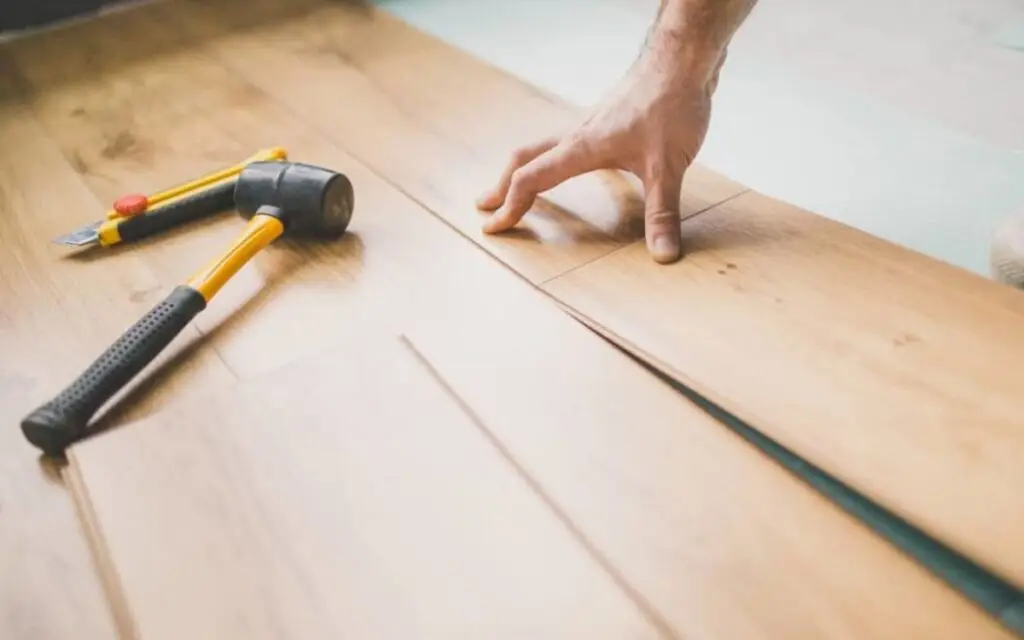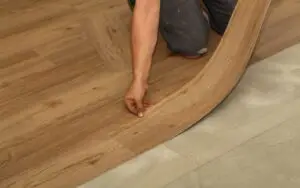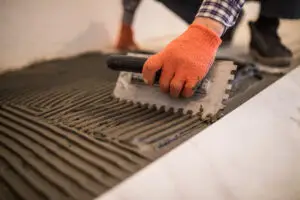Understanding the Costs of Flooring
Initial Costs vs. Long-Term Expenses
When comparing the costs of carpet and laminate flooring, it’s essential to consider both the initial costs and the long-term expenses. The initial cost includes the price of the materials and the labor for installation, while the long-term costs include maintenance, repairs, and replacements over time. A seemingly cheaper option may end up costing more in the long run if it has a shorter lifespan or requires more maintenance. Professional installers can advise you on the most cost-effective options that align with your budget and lifestyle.
Factors Influencing Flooring Prices
Several factors influence the price of flooring, including the type of material, the quality of the product, the complexity of the installation, and the labor costs. Additionally, features such as water resistance, thickness, and style will also affect the cost. Understanding these factors is essential to make a realistic comparison of carpet vs. laminate, and professional flooring services will always offer a clear and precise quote that takes all these aspects into consideration.
Comparing the Cost of Carpet
Types of Carpet and Their Price Points
Carpet prices vary greatly depending on the type of fiber, pile, and style. Lower-quality synthetic carpets, such as polyester or olefin, are typically the most affordable, while higher-quality materials, such as nylon or wool, will be more expensive. The quality of the carpet padding also contributes to the overall cost. Knowing these differences can help you make an informed decision based on your specific budget, and a professional installer will be able to give you a list of options that align with your needs and resources.
Average Carpet Installation Costs
Average carpet installation costs include the cost of the carpet material, the padding, and the labor fees for installation. Labor costs can also vary depending on the complexity of the project, the layout of your space, and the difficulty of removing and disposing of the old carpet. Professional installers will always provide a detailed quote that covers all these elements, guaranteeing a transparent process.
Potential Hidden Costs of Carpet
When planning a carpet installation, it’s important to consider some potential hidden costs that are not always included in the initial estimates. These include the cost of removing and disposing of the old carpet, which can vary according to your local disposal fees, and also the cost of the new padding, which will depend on its quality. These costs can easily increase the overall project price, so it’s vital to get a complete quote from a professional installer before starting any work.
Padding, Removal, and Disposal
Carpet padding is an essential element of any carpet installation, and the cost of the padding can add a considerable sum to the total cost. You should also factor in the cost of removing and disposing of the old carpet, as these fees will also impact your final investment. Professional installers will always take all these costs into account, to make sure you are fully informed from the beginning, and that there are no hidden costs.
Comparing the Cost of Laminate
Types of Laminate and Their Price Points
Laminate flooring prices vary depending on the thickness, quality, and features of the product. Thicker laminate flooring with enhanced features, such as water resistance and advanced locking mechanisms, are generally more expensive than basic options, and the style and brand will also affect the overall cost. Understanding these differences will help you to choose the right product for your budget, while also achieving a great aesthetic. Professional installers can always provide a list of different options that meet your needs, style and resources.
Average Laminate Installation Costs
Average laminate installation costs typically include the price of the laminate material, the underlayment, and the labor for installation. Labor costs can also vary depending on the complexity of the project, the layout of your space, and the need to remove any baseboards or moldings, so it’s always best to get a clear quote from a professional installer that includes all of these details.
Potential Hidden Costs of Laminate
When planning for laminate installation, you should be aware of potential hidden costs, such as the cost of the underlayment, the trims, and the moldings. All of these are essential to guarantee a beautiful and lasting installation, and they will add to the total cost of the project. Professional installers will always account for these additional expenses in their quotes, ensuring that you are aware of the complete cost before starting any work.
Underlayment, Trims, and Moldings
Underlayment provides cushioning and also helps to reduce noise. Trims and moldings are used to finish the edges of the flooring and create a clean look. All of these elements can add extra costs to your project, which should always be factored in before starting the installation. Professional services will always include these costs in the quote they provide, making it very transparent from the very beginning.
A Detailed Cost Analysis: Carpet vs. Laminate
Material Costs per Square Foot
When comparing material costs per square foot, carpet tends to be less expensive than laminate, especially when considering lower-quality options, as these are usually more affordable than laminate flooring. However, the overall cost will depend on the quality and style of each product, which means that high-quality carpets can be more expensive than some types of laminate. This is why a clear quote from a professional is essential.
Labor Costs for Installation
Labor costs for carpet and laminate installation can vary depending on several factors, but they are usually comparable. Carpet installation typically requires precise stretching and trimming, while laminate installation involves fitting planks together, which requires specific skills. Professionals are always well versed in both types of installation, and will always provide a transparent quote that reflects these costs.
Maintenance and Repair Costs
In terms of maintenance and repair costs, laminate is typically easier and less expensive to maintain than carpet. Laminate is resistant to stains and can be easily cleaned with a damp mop, while carpet requires regular vacuuming, and professional cleaning to remove stains and odors. This means that the long term maintenance costs for carpet can be higher than for laminate. This is why it’s always best to carefully consider your lifestyle and maintenance preferences before selecting a flooring type.
Lifespan and Replacement Costs
Carpet generally has a shorter lifespan than laminate, especially in high-traffic areas, where it tends to wear faster. This means you might need to replace carpet sooner than laminate, which will add to its long-term cost. Laminate, on the other hand, is more resistant to wear and can last longer with proper maintenance, making it a more cost effective option over time. Professional installers can always advise you on the best type of flooring, based on the lifespan and value of each product.
Additional Factors to Consider
Durability and Longevity
The durability and longevity of your flooring will greatly impact its long-term costs. Laminate is generally more durable and longer-lasting than carpet, making it a cost-effective choice in the long run. However, if you properly care for your carpet, it can also last for a long time. Professional installers can always guide you in selecting a durable option that suits your needs and also aligns with your budget, while maximizing your investment.
How These Impact Overall Costs
Choosing durable flooring is a smart way to minimize long-term costs, as less durable materials will require more frequent repairs and replacements, which will add to your overall expenses. Investing in quality flooring will save you money down the line, as it is more resistant to wear and damage. A professional installer will always help you assess the best quality options for your resources and needs.
Ease of Maintenance
The ease of maintenance is another important factor to consider, as it will impact the long-term cost and effort involved in maintaining your floors. Laminate is generally easier to maintain, while carpet requires more effort. Professional installers can always provide great advice on the maintenance requirements of each flooring type, to help you make the best decision for your specific needs.
Cleaning and Care Requirements
Carpet requires regular vacuuming and professional cleaning to remove embedded dirt and stains, while laminate can be easily cleaned with a damp mop. Understanding the cleaning requirements of each flooring option will help you assess your specific maintenance preferences, and help you decide which option best aligns with your time and resources.
Impact on Home Value
The type of flooring you choose can also impact your home’s value. While both carpet and laminate are common flooring options, laminate is generally considered more appealing to buyers, due to its versatility and modern aesthetic. However, both options can increase your property’s value, as long as they are well maintained, and professionally installed. It is always best to seek professional advice before making this type of decision, to ensure your investment has a positive return.
Resale Potential
Flooring is one of the first things potential buyers notice when they enter a house, and selecting the right option will help you attract buyers and also add value to your property. While both carpet and laminate can be good options, laminate tends to have a wider appeal, due to its durability and ease of maintenance. Professional installers can also provide you with tips on the best options that align with current market trends, to maximize your resale potential.
Professional Installation vs. DIY
Potential Savings and Risks of DIY
While DIY might seem like a more affordable solution initially, the potential risks involved can end up costing you more in the long run. DIY installations often result in mistakes, wasted materials, and also a lot of frustration, and can lead to the need for a professional installer to come in and fix any errors. This can also void any manufacturer’s warranty, which means you’ll have to bear the financial burden of those mistakes. It’s essential to carefully consider all of these elements before deciding between a DIY and a professional installation.
Why Professional Installation is Worth the Investment
Professional installation provides superior quality, durability, and a long-lasting result, which is often worth the investment. Professionals have the expertise, tools, and knowledge to ensure that the job is done correctly from start to finish, avoiding costly mistakes and guaranteeing that your floors will be flawless and durable. Professional installations are always a great investment for these reasons.
Long-Term Cost-Effectiveness
Although professional installation might have a higher initial cost, it often ends up being more cost-effective in the long run due to the superior quality, and the reduced risk of costly repairs and replacements that come from proper professional installation. Investing in a professional service will ensure that your floor is done correctly, and will also save you money in the long run.
Ensuring Warranty Coverage
Professional installation also guarantees that the manufacturer’s warranty remains valid, which protects your investment, and gives you peace of mind, knowing that any eventual issues will be handled properly. Professionals are familiar with all warranty requirements, and will make sure your floor is installed according to those specific guidelines, so that you can rest easy knowing your investment is protected.
Making the Right Choice for Your Budget
Identifying Your Needs and Priorities
Identifying your needs and priorities is the first step in choosing the right flooring option. Consider your lifestyle, the traffic in your home, and also your maintenance preferences. Also consider what is more important for you, is it cost, comfort or durability? All these factors will influence your final decision, and professional installers can also guide you in this process.
Setting a Realistic Budget
Setting a realistic budget is also essential when choosing new flooring. It’s important to determine how much you are willing to spend and look for options that fall within your price range. Professional installers will be able to provide you with quotes that are precise, and that take into consideration all the factors that are important to you.
Getting Accurate Quotes from Professionals
Obtaining accurate quotes from multiple professionals is the best way to guarantee that you will get the best deal for your project, and also allows you to compare all the details of each quote, from the type of materials used to the labor costs. This will ensure a clear idea of how much your project will cost, and it is one of the best tools for guaranteeing that you are not overspending.
Balancing Cost with Quality and Style
The key to making the right choice is to balance cost with quality and style. While you might be tempted to choose the cheapest option, it’s important to consider the long-term value of your investment and make sure your new floors will be durable, stylish, and that they will enhance your property. Professional installers are always available to guide you through this selection process, making sure you choose the perfect flooring option for you.
FAQs & Answers
Yes, beyond the cost of the carpet itself, you should also consider the cost of the padding, removing and disposing of the old carpet, and any labor costs involved. Professional carpet installers provide transparent quotes that include all these factors, ensuring there are no hidden surprises and that you stay within budget. Therefore, it's always best to work with professionals who can provide you with a comprehensive quote that covers all aspects of your flooring project.
Yes, the type of laminate you choose will significantly impact its cost. Lower-quality laminate flooring will be less expensive, while higher-quality, thicker laminate with advanced features such as water resistance will be more expensive. Professional flooring installers can advise you on the best option that aligns with both your needs and your budget, making sure you select a material that fits your specific requirements and gives you a good return on your investment. They will also advise you on the best quality products to make sure the value is there.
While carpet may have a lower initial cost, it typically has a shorter lifespan compared to laminate, especially in high-traffic areas. This means you may need to replace it sooner, which will add to the long-term cost of the investment. Laminate flooring, on the other hand, is known for its durability and long life span, which makes it a cost effective option in the long run. Professional installers can provide expert advice on the best options, while considering their longevity, which will help you make an informed decision.
Yes, while DIY installation might appear cheaper initially, professional installation can actually save you money in the long run. Professional installers have the expertise, skills, and tools to ensure a flawless installation, minimizing costly mistakes, preventing future issues, and also saving you time and effort. They also guarantee their work, which protects your investment, and also means that you don’t have to pay any extra fees to address any issues that may arise. This will give you peace of mind, making a professional installation a great long term investment.
Generally, carpet tends to have a lower initial material cost compared to laminate, but the overall cost of your flooring will depend on factors like installation, long-term maintenance, and lifespan. Professional flooring installers can assess your specific needs, help you explore your options, and advise you on the best type of flooring that aligns with your needs and your budget. They will also provide a clear, precise quote, which guarantees that you will be well aware of all costs from the beginning.





